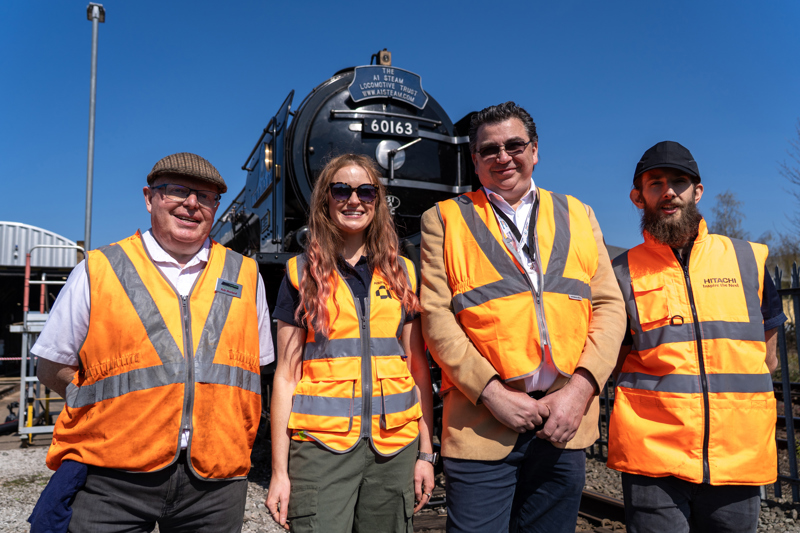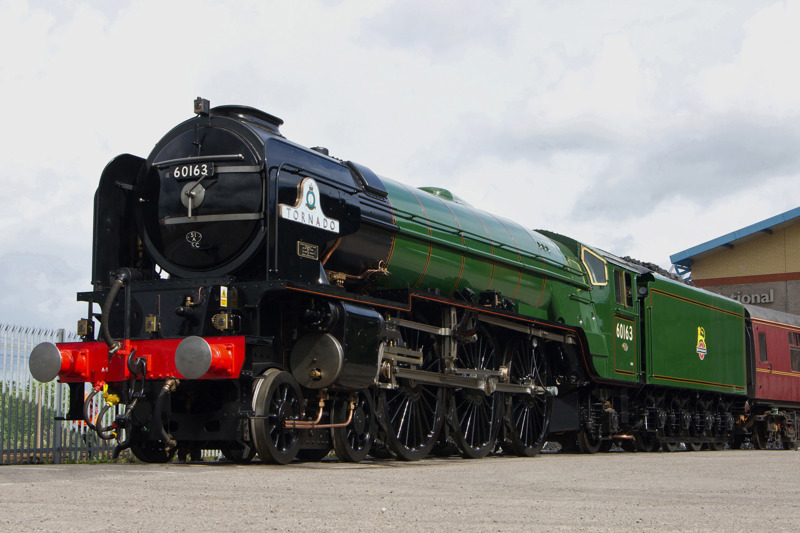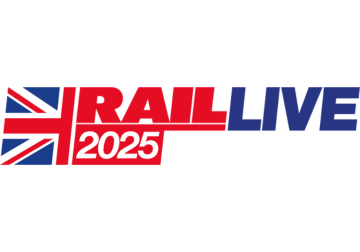
The start of testing digital signalling equipment on a steam locomotive has begun on the Cambrian line in Mid Wales.
A1 Class No. 60163 Tornado has been fitted with European Train Control System (ETCS) technology as part of Network Rail's heritage pathfinder project for the East Cost Digital Programme (ECDP) which has also included Hitachi Rail UK, AtkinsRealis and the A1 Steam Locomotive Trust.
The Cambrian line has been operated using ETCS since 2011. Work is also under way to introduce the system on the East Coast Main Line, with Great Northern trains running between Moorgate and Finsbury Park now controlled by in-cab signalling.
Tornado ran west of Shrewsbury during two overnight possessions on the nights of April 7/8 and 8/9, reaching Welshpool and Newtown respectively. More overnight testing is due to take place this week up until April 17.
Network Rail has spent around £9 million on the pathfinder project which was formally launched in 2021. Part of the reason it’s taken until 2025 for the first dynamic tests to take place has been the delay in the overhaul of Tornado, as well as the work needed to install the equipment.
Ed Akers, Network Rail’s industry partnership director, ECDP, said: “The time it takes (to fit) we expect to significantly decrease.”
He explained that it took 15 months to install ETCS onto a Class 66 for the first time, but the second took 15 weeks.
Network Rail says the fitting of ETCS to a steam locomotive is a world first, and the heritage pathfinder project aims to ensure heritage steam and diesel locomotives can continue to operate on routes without lineside signals.
Akers described the Cambrian tests as “an important stage in a process to determine the technical and commercial feasibility of fitment for heritage and charter fleets”.
"Testing will inevitably lead to some challenges, they will need to be looked at," he added. "We expect that. That is the point of doing the testing. Then we will go through assurance processes."
One aspect of the tests is to examine how the locomotive transitions from the lineside-signalled railway to a route controlled using in-cab signalling as it departs Shrewsbury and joins the Cambrian line at Sutton Bridge Junction.
Twenty-one individual pieces of equipment have been fitted to the locomotive, with some hidden out of sight and others visible on the footplate.

The cab has been rebuilt while the A1 Steam Locomotive Trust has fitted an extension to its power supply as ETCS equipment consumes more power than all the existing systems fitted to Tornado. A second steam turbogenerator, axle-driven alternator and dedicated battery bank all make up the upgraded electrical system.
Amy Clouston, a human factors specialist at AtkinsRealis, said the teams involved worked to “respect the heritage aesthetics of the locomotive”, and consulted steam locomotive drivers during the project. However she was "not sure the equipment can get much smaller".
“Driving screens are removable so they can be taken off when running on other routes,” she said.
Challenges have included ensuring the equipment is kept clean in an environment where there is a lot of water and coal dust.
“The equipment was never designed for such a harsh environment, she said, adding that “placement cannot hinder other driving tasks”.
Other aspects engineers had to consider was ensuring the audible warnings could be heard in a noisy environment but also reduced for quieter conditions, while glare from external and internal light (such as firebox glow) has also had to be considered.
Clouston said that initial feedback before testing started was that drivers were "pleasantly surprised by the integration...people were sceptical at first".
Ratmond Sturton, Technical Solutions Architect, also said the equipment fitted to Tornado will remain compatable with lineside equipment even after the latter is upgraded.
Static tests have been carried out at Locomotive Maintenance Services in Loughborough, while Hitachi’s initial system testing of ETCS took place at the nearby Great Central Railway.
There, Tornado was pulled slowly across test Eurobalises placed in the four foot which contains information that is read by the train to help identify its location.
A Deltic diesel locomotive has also being fitted and is due to be tested on the Cambrian at a later date.
With £9m spent on the project, Akers said that future fitments are expected to cost “a lot less”, but added that the work is also about "understanding the commercial viability".
There are no timescales in places to review the testing, with Akers commenting that the teams "need to see when the Deltic will do its testing".
However, Network Rail has said further refining and assurance processes will be required before any mainline heritage operation in ETCS Level Two.















Login to comment
Comments
No comments have been made yet.